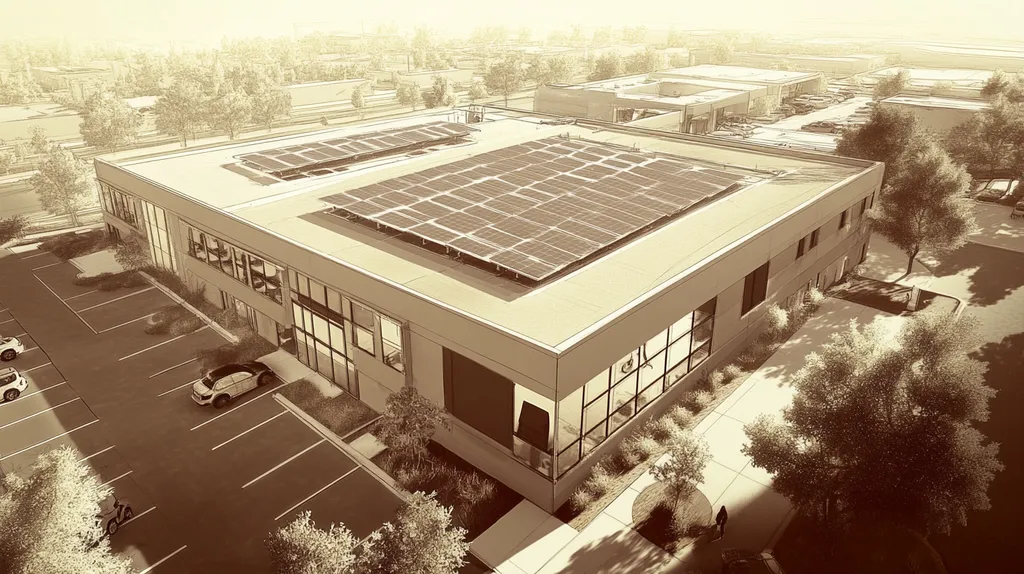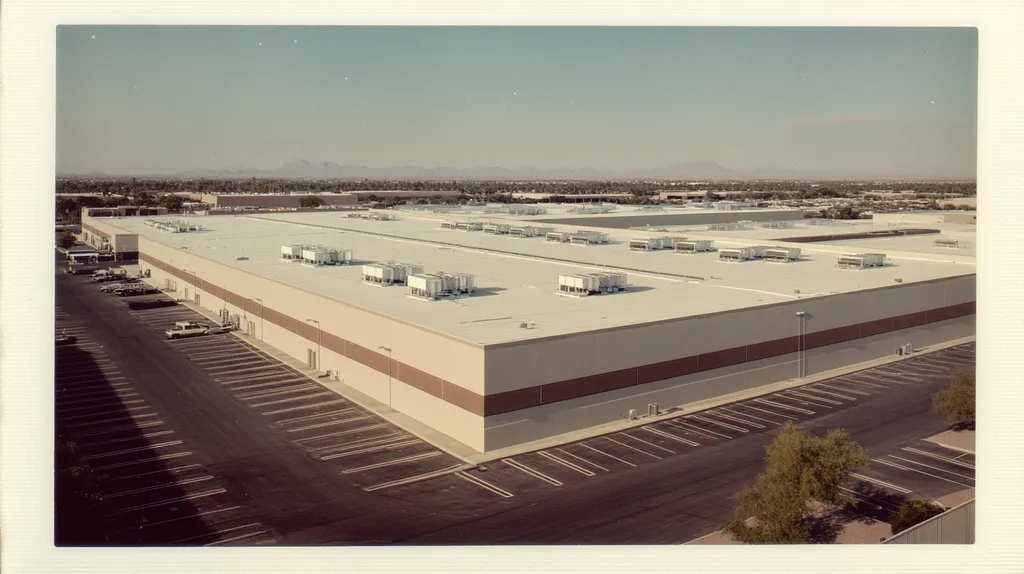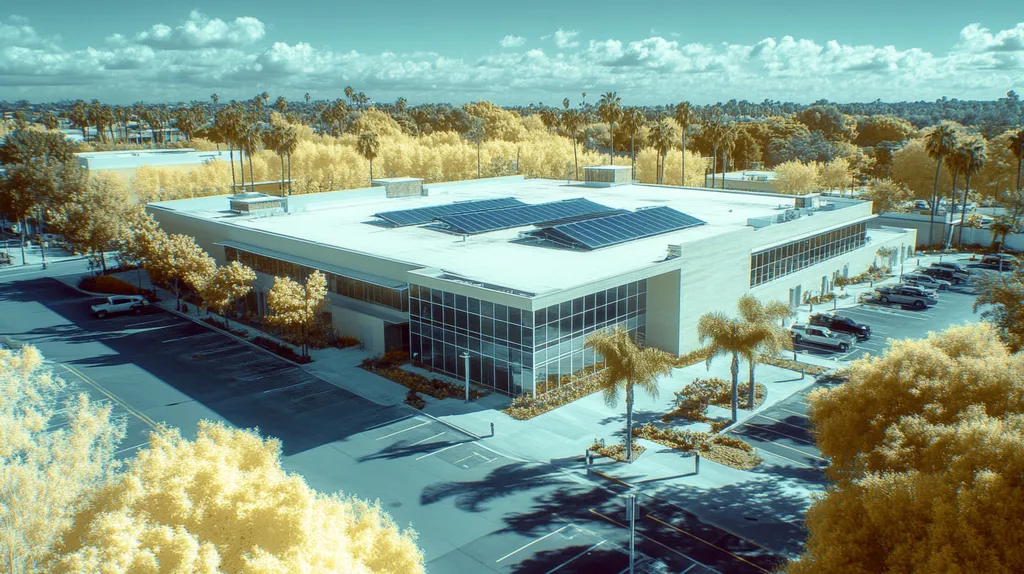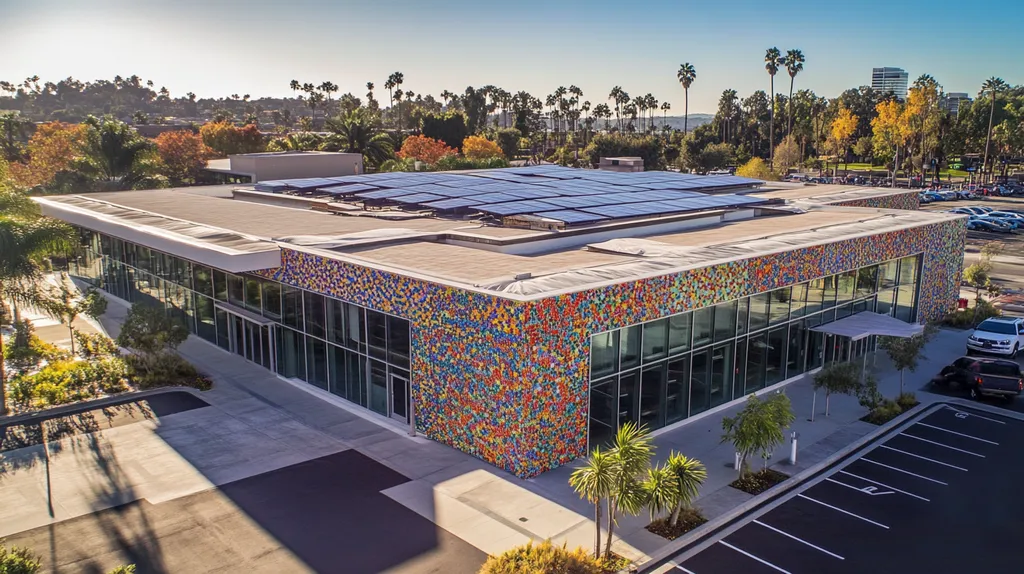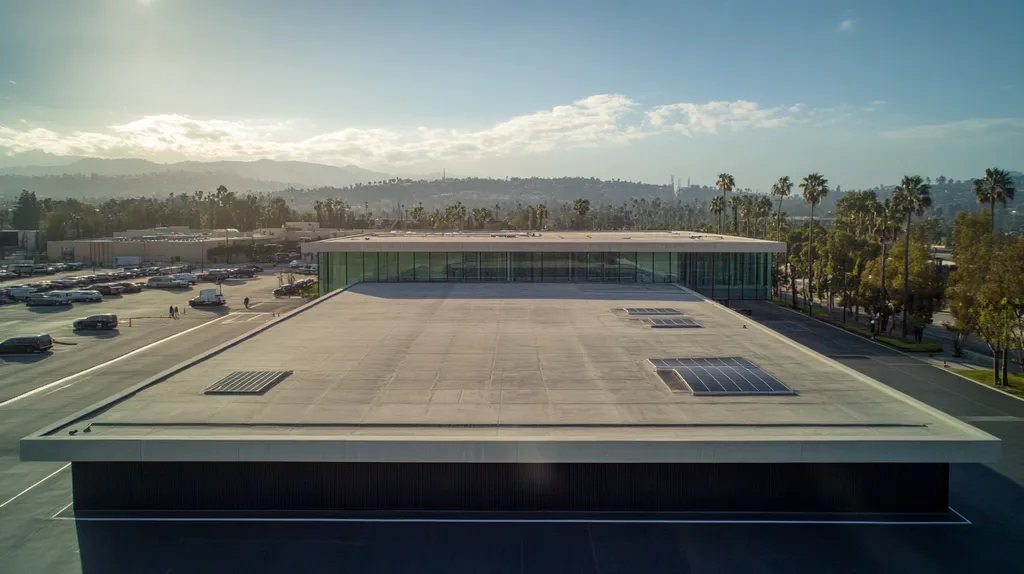When it comes to protecting commercial properties, choosing the wrong roofing contractor can literally open the door to unwanted guests – resulting in thousands of dollars in pest-related damages annually.
While many facility managers focus solely on weather protection, studies show that nearly 60% of commercial buildings face structural issues due to pest infiltration through poorly designed or installed roofing systems.
This comprehensive guide breaks down the essential factors in selecting qualified contractors for pest-resistant roofing solutions, from material selection to installation best practices that keep unwanted visitors where they belong – outside.
SECTION 1: THE BASICS EXPLAINED
Choosing the right contractor for pest-resistant roofing solutions is a critical decision for property owners and facility managers. With pest-related damages potentially costing businesses thousands of dollars in repairs, understanding these roofing systems is imperative. This section breaks down the fundamentals of what pest-resistant roofing is, why it’s vital for your building’s integrity, and how these innovative solutions operate.
What It Is (In Plain Language)
Pest-resistant roofing solutions are specially engineered systems designed to keep unwanted critters—like insects and rodents—out of your building. They utilize a variety of materials and designs that limit opportunities for pests to nest and find access points. Options might include chemical treatments, elevated roofing designs, or materials specifically formulated to repel pests.
In certain applications, roofing membranes are infused with pest deterrents, making them far less appealing to uninvited guests. The materials utilized are often resistant to damp conditions, effectively reducing the chances for pest attraction. Ultimately, pest-resistant roofing does more than shield against the elements; it creates a barrier against unwanted pests.
Opting for pest-resistant roofing isn’t just a transaction; it’s a smart investment in your property’s overall health and longevity. By understanding its benefits, property owners can make informed choices that bolster the building’s durability and safeguard its value.
Collaboration with qualified contractors is essential, as they can guide customers to suitable options tailored to their specific needs. Familiarizing oneself with the various technologies available will illuminate what solutions best fit each unique situation.
Why It Matters (To Your Building)
Pest resistance isn’t merely a bonus—it’s an essential aspect of a healthy, safe environment. Buildings infested with pests can suffer from structural damage, mold growth, and health hazards stemming from pest droppings, all of which create significant financial liabilities.
Statistics reveal that pest infestations result in millions of dollars in damages each year across commercial properties. By investing in pest-resistant roofing systems, property owners can significantly lower the risk of incurring these costly repairs. A proactive stance not only protects the wallet but also enhances the property’s reputation.
Moreover, pest issues can dampen employee morale and tenant satisfaction, with a pest-free workplace leading to improved productivity and greater tenant retention rates. When implemented effectively, pest-resistant roofing solutions can dramatically contribute to the lifespan and integrity of a building.
For owners and facility managers, prioritizing pest resistance should be viewed as a critical component of building maintenance. This proactive approach serves as a frontline defense against potential infestations that could threaten the operational integrity of a facility.
How It Works
Pest-resistant roofing employs an array of strategies to keep unwanted guests at bay. For instance, some designs feature sloped surfaces to prevent water pooling—a common invitation for pests. Proper installation is key, as it ensures that entry points are thoroughly sealed off.
Another effective tactic utilizes materials that naturally repel pests, protecting the integrity of the roofing over time and curbing the accumulation of debris that could harbor insects. Regular maintenance plays a critical role in sustaining pest-resistant properties.
Contractors specializing in pest-resistant solutions bring invaluable insights regarding the best materials and installation practices. Additionally, advanced technologies, such as integrated pest management systems, can significantly enhance a building’s defenses against infestations.
Through consistent maintenance and monitoring, pest-resistant attributes can be sustained over time. This diligence not only secures the roof but also extends the overall lifespan of the building structure.
SECTION 2: PRACTICAL APPLICATIONS
Pest-resistant roofing solutions are essential for commercial and industrial properties, where the threat of infestations looms large. The damage inflicted by pests can lead to leaks and costly repairs, burdening property owners with serious financial ramifications. In fact, research shows that properties lacking appropriate pest defenses endure 30% higher maintenance costs over a decade. Hence, grasping how to effectively implement these roofing solutions is paramount for safeguarding long-term asset integrity.
Common Uses & Examples
Pest-resistant roofing has emerged as the go-to choice for a variety of commercial properties, particularly warehouses and manufacturing facilities. These types of buildings often face heightened risks of pest incursions due to their operational nature and surroundings.
Consider a distribution center nestled close to forests and wetlands. The pest pressure here can be intense. By installing modified bitumen roofing—renowned for its dense composition—businesses can effectively combat this risk while enhancing their roof’s durability.
Additionally, green roofs are becoming popular, especially in urban settings. These roofs can incorporate pest-repelling plant systems, reducing the attraction for unwelcome visitors while simultaneously providing energy efficiency benefits.
Overall, the strategic application of pest-resistant materials not only bolsters the longevity of buildings but also supports sustainable practices that are increasingly becoming the norm in the industry.
When You Need It Most
The case for pest-resistant roofing solutions is especially compelling during pre-construction or major renovation projects. These phases present an ideal opportunity to incorporate specialized materials, preemptively deflecting potential pest invasions.
For industrial facilities planning roof replacements, prioritizing pest-resistant options can stave off long-term damage and exorbitant repair costs down the line. Seasonal transitions, notably prior to winter, amplify the urgency to act, as pests often seek warm havens indoors.
Properties situated in high pest activity zones—like those adjacent to food processing units or shipping docks—should consider pest-resistant roofing a cornerstone of their pest control strategy.
By proactively addressing these concerns, facilities can protect their investments and facilitate uninterrupted operations throughout the year.
Interactions With Other Systems
Pest-resistant roofing must function in harmony with other systems within a commercial property. When integrated effectively, it improves not only roofing performance but overall building efficiency.
For instance, linking pest-resistant roofing with advanced drainage systems can effectively curb moisture accumulation, which is a common draw for pests. Adequate sloping and well-placed gutters are instrumental in eliminating water retention, thus reducing potential pest habitats on the roof.
Furthermore, pairing pest-resistant roofing with high-efficiency HVAC systems can help maintain indoor temperature regulation. Well-maintained, climate-controlled environments are less attractive to rodents and insects, dissuading them from infiltrating building interiors.
Ultimately, when assessing a roofing contractor, property owners should inquire about their knowledge of how these systems interact. A comprehensive strategy addresses not just current pest issues but also preempts future infestations, enhancing the overall longevity of the property.
SECTION 3: KEY TERMINOLOGY DECODED
Navigating the world of roofing terminology is essential for property owners and facility managers. Misunderstanding key terms can lead to poor decisions, such as investing in materials that don’t effectively repel pests. In fact, pest-related damages can cost businesses millions each year. This section breaks down crucial terminology, demystifies industry jargon, and clarifies measurements to empower you to make informed choices that protect your investment.
Essential Terms Explained
When discussing pest-resistant roofing, a few terms are paramount. First, “pest-resistant” refers to materials designed to keep insects and rodents at bay, acting as a proactive line of defense. Then there’s “membrane,” which describes a protective layer—often single-ply—that prevents pests from infiltrating your building.
The “R-value” is another critical measure, indicating how well a roofing material insulates against heat transfer. Higher R-values can deter pests that thrive in extreme temperatures. Two more important concepts are “flashing” and “drainage.” Flashing prevents water leakage at joints, while efficient drainage is key for minimizing standing water that attracts unwanted critters.
By grasping these terms, property owners can have clearer conversations with contractors about optimal pest-resistant solutions.
Industry Jargon Translated
In the roofing realm, jargon can lead to confusion. For instance, “EPDM” stands for ethylene propylene diene terpolymer, a popular synthetic rubber valued for its durability against pests. Similarly, “TPO,” or thermoplastic polyolefin, is a synthetic membrane known for its heat-reflective properties that help reduce pest attraction.
When contractors refer to “biodegradable” products, they’re talking about materials that decompose naturally, ultimately limiting pest habitats. Additionally, a “weather barrier” is critical in pest resistance; it prevents moisture intrusion while allowing the roof to ventilate, keeping pests at bay.
Decoding this jargon can enable facility managers to make more informed decisions when selecting roofing solutions.
Measurement & Units Simplified
Measurements play a vital role in roofing projects, particularly when it comes to assessing materials and insulation needs. The term “square” indicates a measurement of 100 square feet, which is essential for estimating required materials accurately.
Next is “gauge,” which refers to the thickness of roofing materials. A lower gauge number indicates thicker, more durable material, which can enhance pest resistance. For example, a 24-gauge steel option will outperform a 30-gauge alternative in terms of resilience.
Additionally, understanding the “pitch,” or slope, of the roof is crucial, as it impacts drainage and pest attraction. Lower pitches can lead to water accumulation, creating an inviting habitat for pests.
By clarifying these measurements, property owners can confidently choose effective and appropriate roofing solutions for their needs.
SECTION 4: DECISION FACTORS
Selecting a contractor for pest-resistant roofing solutions is no small feat—it’s a high-stakes game where financial and structural health hang in the balance. Pest infestations can lead to catastrophic damage and costly repairs, as evidenced by a study revealing that nearly 60% of commercial buildings will face roofing issues due to pests over time. In this section, we’ll unravel the core decision factors, from financial implications to performance trade-offs and material durability.
Cost Considerations
Cost is often the initial consideration when selecting a roofing contractor, but it’s a slippery slope. While the upfront price tag may seem appealing, lurking behind it are hidden costs related to pest damage and unforeseen repair needs. For instance, opting for low-quality materials can lead to more frequent fixes—an expense that can quickly overshadow any savings.
Understanding financing options can also be key: some contractors provide plans that ease the financial burden. Additionally, property owners should prioritize warranties, as a good warranty serves as a financial safety net, ensuring ongoing pest resistance while minimizing future expenditures.
Moreover, it’s essential to account for the costs of pest remediation; doing so can prevent nasty surprises lurking in the shadows. A holistic cost analysis should encompass all variables, guaranteeing that property owners invest wisely in long-lasting solutions that effectively fend off pests for years to come.
Performance Trade-offs
Choosing pest-resistant roofing often involves navigating a maze of performance trade-offs. Different materials can offer varying levels of pest resistance, but they might also compromise aspects like energy efficiency and weather resilience. Take, for instance, metal roofs: they shine in durability and pest defense but might not provide the same thermal insulation as asphalt shingles.
Aligning pest-resistant features with performance needs is vital. Property owners should assess how each potential roofing option will interact with their specific climate and operational usage. Oversights in this area could lead to unwelcome sacrifices in performance.
Investing time in conversations with contractors can clarify how they plan to juggle pest resistance with overall functionality. A tailored approach to roofing design can avert performance failures, ensuring that the roof excels in guarding against pests while functioning optimally.
Lifespan & Durability Factors
The lifespan and durability of a roofing system play a pivotal role in its long-term effectiveness against pests. Materials like modified bitumen and thermoplastic are crafted for resilience and longevity, but they may come with a larger upfront investment. Making a robust choice upfront can prevent headaches and hefty bills for repairs and replacements down the line.
Durability acts as a guard against pest infiltration. For example, a high-quality synthetic slate roof can last over 50 years with minimal maintenance, significantly extending its pest-resistant qualities. Property owners should inquire about the expected longevity of proposed materials and how those expectations stack up against industry standards.
Regional factors cannot be overlooked, either; aspects such as climate, humidity, and local pest behavior directly influence material durability. Contractors who understand these dynamics can recommend the most suitable and durable materials tailored to the local environment.
In conclusion, putting a premium on lifespan and durability not only enhances pest resistance but also translates into long-term savings for property owners throughout the life of their roof.
SECTION 5: COMMON CHALLENGES
For property owners selecting a contractor for pest-resistant roofing solutions, the stakes are high. The wrong choices can lead to pest infestations, which cause costly structural damage and elevate maintenance expenses. Understanding these common challenges allows property owners and facility managers to make informed decisions and ensure the long-term integrity of their roofing systems.
Frequent Problems & Solutions
A leading challenge in roofing is the vulnerability of traditional materials to pests. For instance, wood roofs are a favorite among termites, while organic materials can entice rodents. To combat this, property owners should pivot toward pest-resistant options, such as metal or synthetic materials, engineered specifically to deflect vermin.
Improper installation can also derail pest-resistant systems. Even the best materials can fall victim to pests if not installed correctly. It’s paramount to choose contractors experienced in pest-resistant techniques to minimize this risk.
Another persistent issue is the lack of regular maintenance. Debris accumulation and damage over time can create inviting environments for pests. Establishing a routine for inspections and maintenance helps reveal vulnerabilities before they escalate into significant problems.
Adopting proactive pest control measures alongside roofing solutions enhances overall protection. Collaboration with pest management professionals can provide a comprehensive strategy to address potential infestations before they take hold.
Warning Signs To Watch For
Being vigilant for early warning signs can save property owners from major pest problems. One clear indicator is droppings or chewed materials—tell-tale signs of a pest presence. Regular inspections can help catch these signs early, minimizing damage.
Small holes or tunnels in roofing materials are another cause for concern, signaling potential pest entry points that require immediate remediation. A visual check of the roof’s underside can also reveal wood damage or discoloration, further indicating pest activity.
Contractors should provide thorough pre-installation inspections to identify existing pest issues, ensuring that no hidden concerns go unaddressed.
Additionally, regular maintenance reports serve as valuable tracking tools. Adequate documentation enables property owners to respond rapidly to any emerging issues, keeping pest-resistant measures effective over time.
Preventative Approaches
Implementing preventative strategies is key to maximizing the effectiveness and longevity of pest-resistant roofs. A winning method is to adopt integrated pest management (IPM) practices, focusing on sustainable prevention with minimal pesticide use. IPM combines monitoring, exclusion, and smart material choices to deter pests proactively.
Choosing contractors who advocate for eco-friendly solutions is essential. Sustainable roofing materials that ward off pests without harsh chemicals not only protect structures but also comply with environmental regulations.
Establishing regular maintenance agreements with licensed contractors strengthens defenses. Such agreements typically involve seasonal inspections and prompt repairs, keeping roofing systems in top shape and pest-free.
Finally, investing in knowledge about local pest trends and pest control innovations empowers property owners and facility managers. Staying up to date ensures roofing decisions are not only timely but remain effective in thwarting pest issues.
SECTION 6: NEXT STEPS & RESOURCES
As property owners and facility managers navigate the world of pest-resistant roofing solutions, making informed choices is crucial. A slip in due diligence, such as failing to ask the right questions or ignoring industry standards, may lead to costly consequences. By gathering key information, decision-makers can confidently select the right contractor, ensuring a sustainable roofing investment that stands the test of time.
Questions To Ask Providers
Beginning the contractor evaluation process with pointed questions is essential. Start by probing their experience with pest-resistant materials. Contractors should articulate their expertise with various options, from metal to PVC and TPO roofing systems.
Request references from past projects to corroborate the contractor’s credibility and quality of work. A reputable contractor will be happy to provide contacts or even case studies showcasing their pest-resistant work. Additionally, inquire about warranties and maintenance packages, as these can greatly influence long-term effectiveness.
Explore the contractor’s pest control strategies integrated into the roofing solution. Understanding how chosen materials deter pesky invaders while maintaining structural integrity is key to a robust defense.
Lastly, verify licenses and insurance. Ensuring these credentials not only affirms compliance with regional regulations but also protects the property owner, minimizing financial risk.
Industry Standards & Guidelines
Familiarizing oneself with industry standards is paramount when selecting a roofing contractor. For instance, organizations such as the National Roofing Contractors Association (NRCA) offer essential guidelines for installing and maintaining pest-resistant roofing solutions.
Delve into local building codes to ensure compliance with mandated materials or roofing designs. Adhering to these regulations supports safety and can also influence warranties and insurance considerations.
Moreover, seek out certifications indicating a contractor’s proficiency with pest-resistant roofing systems. Such credentials typically require specialized training and a commitment to staying updated on pest management trends, showcasing the contractor’s dedication to quality practice.
Aligning with established standards and certifications helps property owners identify qualified contractors devoted to high-quality workmanship and effective pest mitigation.
Further Learning Simplified
Various resources abound for property owners eager to deepen their knowledge of pest-resistant roofing solutions. Online platforms like the NRCA’s website abound with insightful articles, webinars, and training sessions focused on best practices and pest management.
Trade publications frequently provide case studies and expert insights on effective solutions and innovations in roofing. These resources can guide property owners in evaluating different materials and techniques tailored to their specific needs.
Additionally, attending local industry conferences or workshops offers an opportunity to directly engage with roofing experts. These events often showcase the latest trends in pest resistance and provide networking opportunities with potential contractors.
By embracing ongoing learning, property owners empower themselves to make informed choices that maximize the longevity and effectiveness of their roofing investments.
The Bottom Line
With pest-related damages costing commercial properties over $6 billion annually, selecting the right contractor for pest-resistant roofing isn’t just a maintenance decision—it’s a critical business imperative.
The most successful facility managers approach this challenge systematically, armed with industry knowledge and a clear understanding of their building’s specific needs.
By prioritizing contractors who demonstrate expertise in pest-resistant materials, maintain proper certifications, and offer comprehensive warranties, property owners can significantly reduce their risk exposure.
The future of commercial roofing lies in integrated solutions that combine durability with sophisticated pest deterrence, making contractor selection more crucial than ever.
Remember: in the battle against unwanted rooftop visitors, your choice of contractor today determines your property’s protection for decades to come.
FREQUENTLY ASKED QUESTIONS
Q. What is pest-resistant roofing for commercial roofs?
A. Pest-resistant roofing refers to specially engineered systems designed to keep pests at bay. These solutions utilize materials that limit opportunities for pests to nest and gain access to your building. By understanding these systems, property owners can make informed choices that enhance their building’s durability.
Q. When should I consider pest-resistant roofing for my industrial roof?
A. It’s recommended to consider pest-resistant roofing during pre-construction or major renovations. This phase allows for the installation of specialized materials designed to prevent infestations proactively. Addressing these concerns early on helps protect your investment and maintain uninterrupted operations.
Q. What are some key terms to know about commercial roofing?
A. Essential terms include “pest-resistant,” referring to materials designed to keep pests away, and “membrane,” which acts as a protective barrier. Other important terms are “R-value,” indicating insulation efficiency, and “flashing,” which prevents leaks at joints. Understanding this terminology aids informed decision-making.
Q. How do I choose the right contractor for an industrial roof?
A. When choosing a contractor, evaluate their experience with pest-resistant materials. Request references from previous projects and inquire about warranties and maintenance packages. Also, ensure they possess the necessary licenses and insurance, safeguarding your investment and minimizing potential risks.
Q. What challenges do I face with commercial roofing?
A. Common challenges include vulnerability of traditional materials to pests and improper installation. Traditional options like wood can attract termites, while poor installation leads to gaps that allow pests entry. Establishing a routine maintenance schedule is critical to identifying these issues before they escalate.
Q. What questions should I ask contractors about commercial roofing?
A. Ask about their experience with different pest-resistant materials and request references to validate their work. Inquire about their approach to pest control in roofing solutions and ensure they can provide warranties. Knowing their credentials is essential for assessing their professionalism and expertise.
Q. How can I stay informed about pest-resistant roofing solutions?
A. Stay updated by exploring resources like the NRCA’s website for articles and webinars. Trade publications often feature case studies and expert insights, while industry conferences provide opportunities to connect with professionals. Engaging with these resources enhances decision-making on roofing choices.


